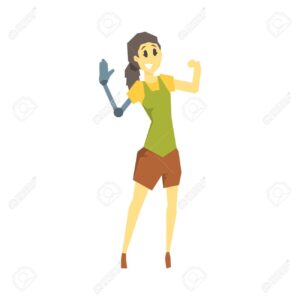Prosthesis
Prosthesis is an artificial replacement of a missing body part, which may be lost through trauma, disease, or congenital conditions. Prosthetics divide into two categories – Upper extremity prosthetics & Lower extremity prosthetics


Prosthetic amputee rehabilitation is primarily coordinated by a clinical prosthetist and an inter-disciplinary team of health care professionals including psychiatrists, surgeons, physical therapists, and occupational therapists.

If you have had an amputation or were born with a missing limb, you may wish to be fitted with prosthesis. There are many reasons you may be missing part or all of a limb, the most common being diabetes, vascular disease, cancer, trauma and congenital (birth defect).
No matter the cause of your limb absence, the solution is broadly similar. In simple terms, we will aim to provide a prosthesis that enables you to carry on with your normal day-to-day activities. Depending on the level of limb loss, your general health and fitness and your own expectations, this could range from running or other sports, to returning to employment, to walking a few kilometres, to simply being able to get around the house. Each person faces unique challenges and will be assessed on an individual basis; Our Prosthetist will discuss your needs and expectations in detail so that we can provide the best solution for you.
We can make and fit prosthesis for almost any level of limb absence, but the most common levels are as follows:
Lower Limb
- Partial Foot (including Lisfranc, Chopart)
- Ankle Disarticulation (Symes)
- Transtibial (below-knee)
- Knee Disarticulation
- Transfemoral (above-knee)
- Hip Disarticulation and hemipelvectomy
Upper Limb
- Partial Hand and Digits
- Wrist Disarticulation
- Transradial (below-elbow)
- Transhumeral (above-elbow)
- Shoulder Disarticulation
- Forequarter






 020-24453547 / 020-24450101
020-24453547 / 020-24450101